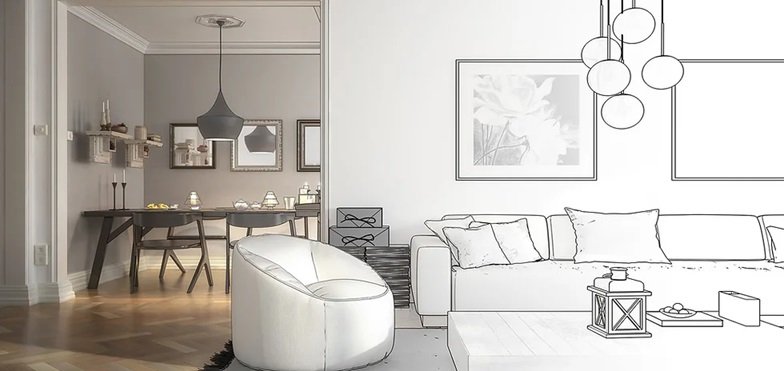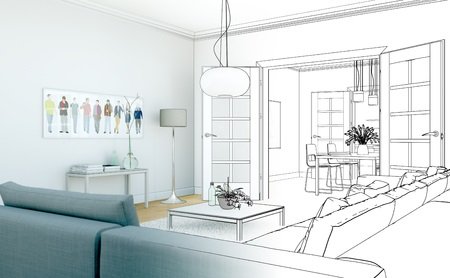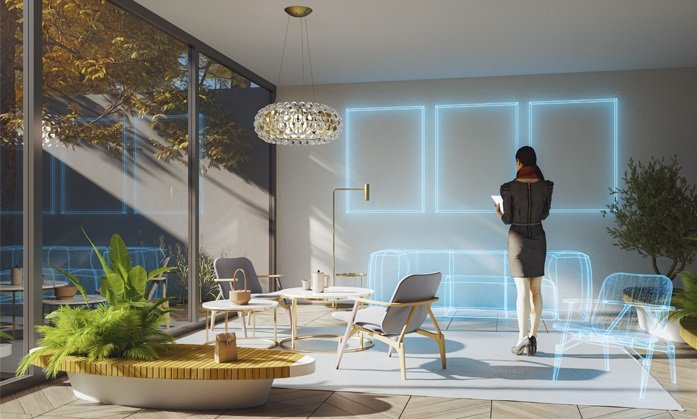Table of Contents
As information technology engineers, you’re likely familiar with how artificial intelligence (AI) has transformed various industries. But have you ever considered how AI is making waves in interior design? Yes, you read that right! The fusion of AI and interior design is creating a whole new paradigm, making it easier for homeowners and designers to create stunning, personalized spaces. Let’s dive into how this fascinating blend of technology and creativity is reshaping interior design and why it’s something you might want to pay attention to.
AI in Interior Design: A New Frontier
At its core, AI in interior design involves the use of advanced algorithms to analyze user behavior, style preferences, and spatial requirements. By doing so, AI can offer tailored design suggestions that cater to individual tastes and needs. This is not just a futuristic concept; it’s happening right now, thanks to the rapid advancements in AI technology.
One standout example is the software tool “Interior AI,” which has been featured in publications like The New York Times and TechCrunch. This tool allows users to take a photo of their current interior, select an interior style, and then receive AI-generated suggestions for furnishings and designs that align with their style preferences. The result? A virtual representation of a beautifully designed space tailored just for you.

How Does AI Work in Interior Design?
The magic of AI in interior design lies in its ability to process vast amounts of data and generate meaningful insights. Here’s a breakdown of how it works:
- Data Collection: AI systems collect data from various sources, such as user inputs, online behavior, and even social media interactions. For instance, if you’ve been pinning minimalist designs on Pinterest, the AI can take note of this preference.
- Data Analysis: The collected data is then analyzed to understand patterns and preferences. This includes identifying your preferred color schemes, furniture styles, and even specific layout configurations.
- Design Suggestions: Based on the analysis, the AI generates design suggestions. These can include recommendations for furniture, wall colors, lighting, and other elements. Some advanced systems can even create 3D simulations, allowing you to see how the suggested changes would look in your space.
- Customization: The AI can further refine its suggestions based on user feedback. If you like or dislike a particular suggestion, the system learns and adjusts accordingly, offering even more personalized options.
Real-Life Examples: AI in Action
Imagine you’re an IT engineer with a hectic schedule. You want to redecorate your living room but lack the time and expertise to explore different design options. This is where AI tools like “Interior AI” come in handy. You simply upload a photo of your living room, select a preferred style—say, Scandinavian—and voilà! The AI provides you with a range of suggestions, from furniture pieces to color schemes. You can even see a virtual layout of your room with the new design elements, making it easier to visualize the final outcome.
Another real-life example is the use of AI in commercial spaces. Companies like IKEA are leveraging AI to offer customers a virtual shopping experience. By using augmented reality (AR) and AI, customers can virtually place furniture in their homes before making a purchase, ensuring that the pieces fit both in size and style.
The Benefits of AI in Interior Design
The integration of AI into interior design offers several advantages:
- Efficiency: AI significantly speeds up the design process by quickly analyzing data and offering instant suggestions. This is particularly beneficial for busy professionals who need quick solutions.
- Cost-Effective: By providing accurate visualizations, AI helps avoid costly mistakes. You can see how different elements will look together before making any purchases, reducing the risk of buyer’s remorse.
- Personalization: AI can create highly personalized designs based on individual preferences, making it easier for users to achieve their dream spaces.
- Accessibility: AI tools make professional-grade design services accessible to everyone, regardless of their budget or expertise.

The Future: AI and Beyond
The potential of AI in interior design is immense. As AI technology continues to evolve, we can expect even more sophisticated tools that offer real-time customization, voice-activated design suggestions, and integration with other smart home technologies. For instance, future AI systems could analyze data from smart thermostats and lighting systems to suggest designs that optimize energy efficiency.
For IT engineers and tech enthusiasts, this fusion of AI and interior design offers an exciting new frontier to explore. Whether you’re looking to redecorate your own space or develop new AI applications, the possibilities are endless.
Conclusion
AI is not just a buzzword; it’s a transformative force that’s reshaping industries, including interior design. For those of us in the tech world, this represents a fascinating convergence of technology and creativity. So, the next time you’re thinking about redesigning your home or office, consider giving AI a try. You might be surprised at how seamlessly it can blend style with functionality, all tailored to your unique preferences.




Leave a Reply